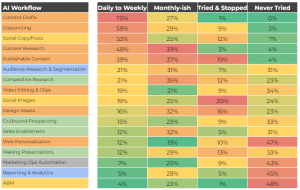— January 21, 2019
From the birth of the search engine through 2016, advertisers worked hard to make their SEM ad messages concise enough to fit into the strict character limits of a standard text ad. Every ad had 25 characters in a headline and 35 characters in each of the two description lines.
Also, advertisers could get beyond these limitations and increase their ad real estate—they could proactively create ad extensions such as enhanced sitelinks, callouts, price extensions, structured snippet extensions, and the like.
In search marketing years, doesn’t 2016 seem like a long time ago? In just the last two years, the search engine results page (SERP) has seen a massive amount of change.
Walking Upright: Expanded Text Ads
In late 2016, Google (and other publishers shortly thereafter) introduced shiny new expanded text ads (ETAs).
ETAs added an extra headline and increased the headline character limit from 25 to 30. The new ad type consolidated two description lines into one and topped it with 10 additional characters. Overnight, ad text space expanded by 45 characters.
Early testing proved that ETAs brought more exposure, a higher click-through rate, and more visitors to advertisers’ websites. Consequently, over the last couple of years all advertisers have been slowly, surely moving toward ETAs.
Creative Changes
Creatives also had to evolve, as devices we use every day got bigger. Also, since people now make more precise and educated search queries, advertisers can communicate with them using more specific messaging and visuals to drive more clicks.
The Modern Search Age: More Space, Dynamic Ads
The evolution of search continues, and won’t stop any time soon.
Last year, Google launched two new ad types allowing advertisers to expand and experiment with their search advertising campaigns even further:
- Expanded text ads improved (ETAi) allow advertisers to have three headlines (30 characters each) and two description lines (90 characters each). This means creative ad text has increased by 130 characters since 2017 and by 175 since early 2016.
- Google’s responsive search ads have the same character specifications as ETAi, but advertisers can add up to 15 headlines and four description lines to one ad. Google Ads then shows all possible ad combinations to best match a user’s search query. Advertisers can preselect one specific headline and one specific description line to always appear in the first position within the creative.
New Formats, New Benefits
The search engines suggest spreading, separating, and adapting your messages to the new ETAi and RSA formats instead of simply adding additional lines of text to your existing creatives.
The new ad types allow users to see headlines—that is, the most important, relevant message—in bold blue text. This helps you grab attention and entice people to continue to your website.

Note that using all the available characters may truncate your ad on smaller screens, leaving viewers with incomplete messaging and possibly no call to action.
The great thing about RSAs is that they alleviate advertiser headaches due to constant A/B testing. A/B test no more! This is a useful solution for teams juggling several channels and looking to automate.
If you prefer greater control over the message structure and update frequency, ETAi is an excellent solution, because it allows you to use the new format and update the creative test as you see fit.
Be Part of the Next Phase
The SERP looks very different today than it did just three years ago. If you haven’t used the newer ad formats yet, it’s a good idea to start, as your competitors are likely already getting their feet wet. Know that whether you go with RSAs or ETAi, testing is your key to success.
Digital & Social Articles on Business 2 Community
(48)





